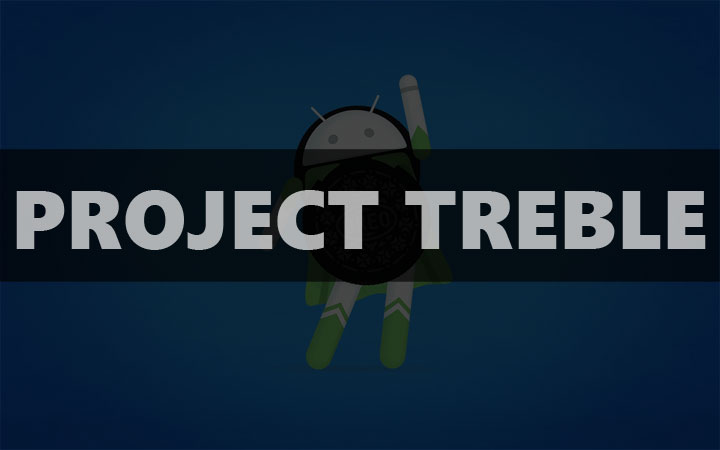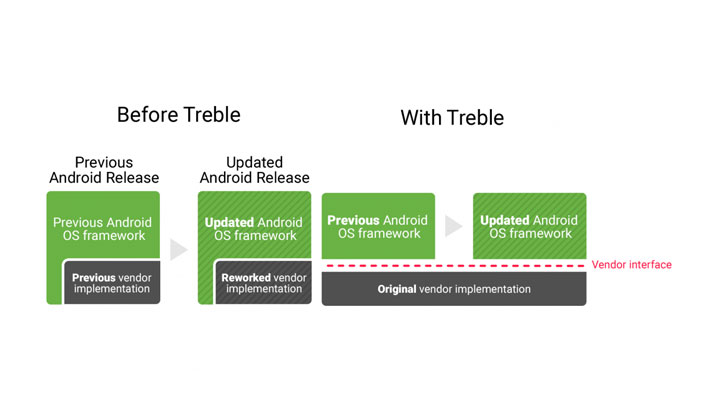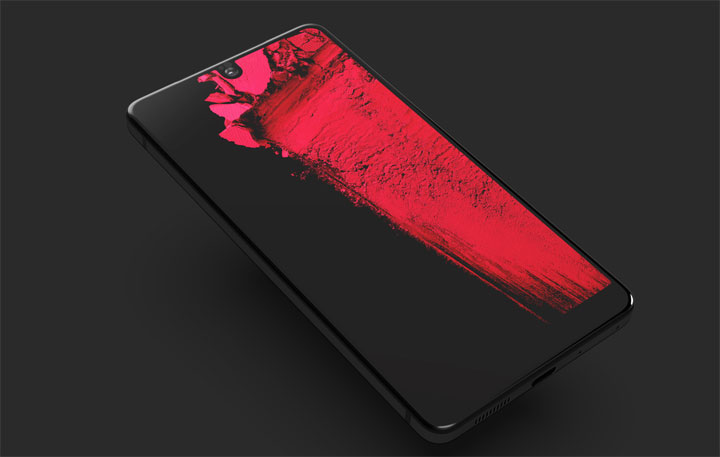
You must have heard about Google’s Project Treble but do you know what exactly it is? Even though Android is the most popular mobile operating system in the market and is filled with useful features, it still leaves a lot to be desired. But, one thing that’s plagued it from the beginning is the inconsistency in software updates.
According to the latest Android distribution chart, Android Oreo (both version 8.0 and version 8.1) is being used on 14.6 % of all available Android devices in the market. That’s not something to be proud of, especially when Google has already launched Android P. This is a big problem as phones without the latest updates are not only open to various vulnerabilities, but it also leads to the users missing out on a lot of awesome stuff that’s released annually. And, Project Treble aims to solve this problem.
What Is Project Treble?

The internet is calling Project Treble a proper fix for fragmentation. It aims at a part of Android architecture called vendor implementation whose purpose is to create a communication link between the phone’s software and hardware. With Treble enabled, the manufactures can separate the user interacting software from the software required for updating process and the hardware. Hence, they can focus their time and money on rest of the Android framework without worrying about various types of hardware configurations that they sell.
Must read: What’s the Difference Between Stock Android, Android One, & Android Go?
In short, with Project Treble, Google provides the groundwork and tools necessary for a quick software update which, in turn, reduces the workload from the manufacturers.
How Does Project Treble Work?

Before we dig deep into how Treble works, you should know how the software update process works in general. So, when Google makes the update available, it is first sent to the mobile chipset manufacturers like Qualcomm and MediaTek. Here, they make the update compatible with their chipset which powers all the devices.
Next, the updated software is passed to the smartphone manufacturers like Samsung, LG, Huawei, etc. Now, it is their turn to make the software compatible with their apps. Here, they also adjust the update according to their skin add new features before pushing it to the carriers to test this new update and then release it to the public. So, as you can see that this three-step process is quite lengthy as well as costly. Hence, most manufacturers ignore the updates or limit it to their flagship devices.
Don’t miss: Understanding Smartphone Specs: The SoC (System on a chip)
What Project Treble does is that it removes the first step from the process. If enabled, it will cut off the work done by the chipset manufacturers and speed up the process. But, the last two steps still exist. What this means is that how soon you get the update after Google pushing it solely depends on the manufacturer now.
If your device runs on Android Oreo or above out of the box, there’s a high chance that it comes with Project Treble enabled by default. But, if you upgraded from Nougat to Oreo, you may not have it. Just go to the Play store and search for Treble check; install the app and run it to confirm whether your device supports it or not.
Is Project Treble A Big Deal?

Well, of course, it is a big deal. Project Treble might be the biggest update Google has pushed in a long time. It is the reason that the Essential Phone is running Android P even before Google unveils the latest Pixel which usually kicks start the latest Android version every year.
Suggested for you: Are Cheap Android Phones Worth It?



Join The Discussion: